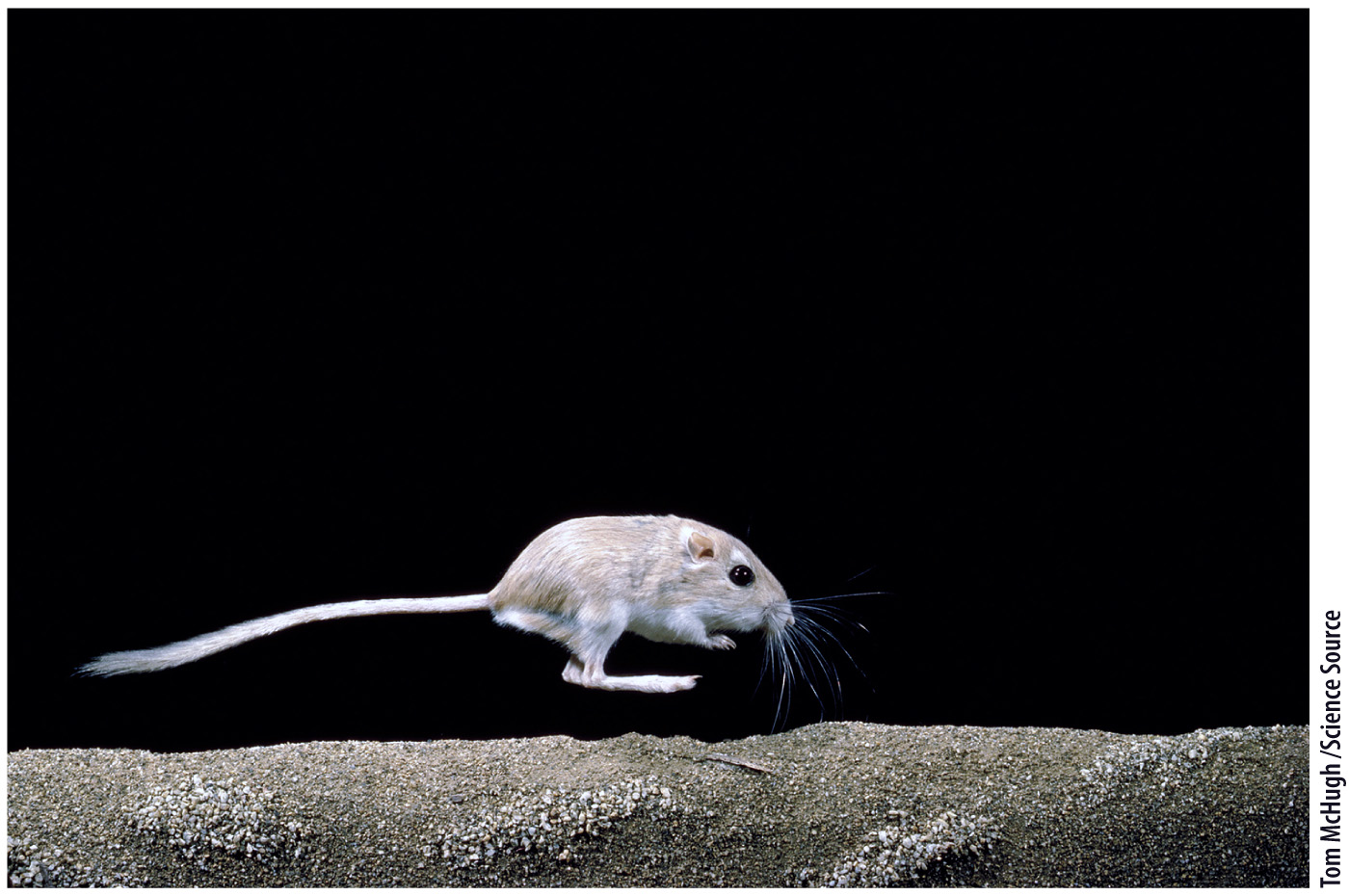41.3 Structure and Function of the Mammalian Kidney
Mammals excrete urea dissolved in solution, but they must be able to do so without losing too much water, an adaptation to living on land. To minimize the loss of water, they remove water from the waste-
The cells of the kidneys are surrounded by a solution called the interstitial fluid. Mammals concentrate their urine by generating concentrated (hypertonic) interstitial fluid deep in the kidney, through which the collecting ducts pass. Then, as the filtrate passes through the collecting ducts, water moves out of collecting ducts and into the interstitial fluid by osmosis, leaving concentrated urine in the collecting ducts.

This process is quite efficient, and allows animals to thrive in diverse environments. For example, the giant kangaroo rat shown in Fig. 41.14, a desert mammal, reabsorbs so much water that it does not need to drink: It can obtain enough water from seeds and cellular respiration. The giant kangaroo rat is thought to produce the most concentrated urine of all mammals. Marine mammals, such as whales, dolphins, and seals, also have an exceptional ability to concentrate their urine. They can remain at sea for long periods of time but cannot drink seawater for net water uptake. They, too, rely on water produced by cellular respiration in combination with water in the food they eat to remain in water balance.
In this final section, we examine the mammalian kidney in more detail. The kidneys of birds share many features with those of mammals. However, these features arose independently in birds and mammals and are therefore the result of convergent evolution, presumably as adaptations for efficient processing of wastes in endothermic vertebrates with high metabolic rates (Chapter 40).